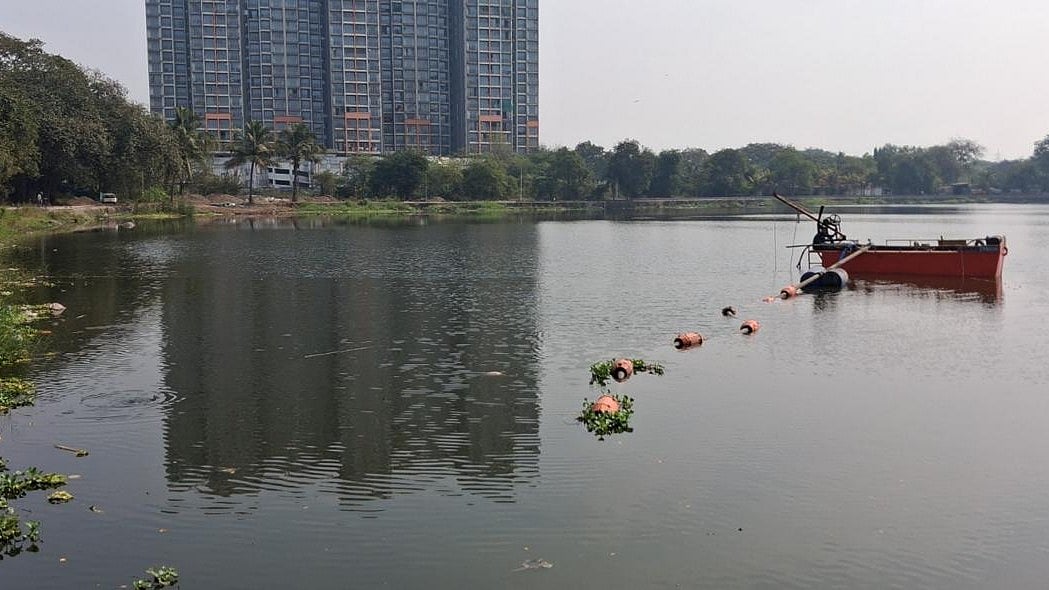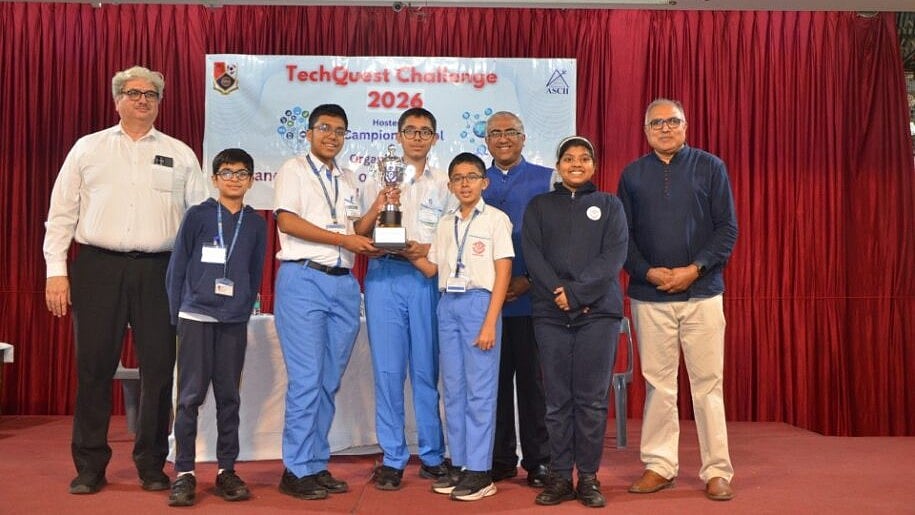Rainwater harvesting involves collecting and storing rainwater for reuse instead of letting it run off or be absorbed into the ground or channeled into drains, streams, or rivers. It's an easy way to conserve water at home and reduce your bills. Whether you opt for a custom-designed system or a simple rain barrel collection method, harvesting rainwater is a smart and sustainable choice. It is a process used to collect, store, convey, and purify rainwater that runs off rooftops, parks, roads, and open grounds for later use. Let's take a look at the diagram of the rainwater harvesting system.
Rainwater harvesting is a simple process or technology used to conserve rainwater by collecting, storing, conveying, and purifying rainwater that runs off of rooftops, parks, roads, open grounds, etc. for later use. Here, let us have a look at the diagram of the rainwater harvesting system.
What Is Rainwater Harvesting?
The term rainwater harvesting is being frequently used these days, however, the concept of water harvesting is not new for India. Water harvesting techniques had been evolved and developed centuries ago.
Rainwater harvesting is the process of augmenting the natural filtration of rainwater in to the underground formation by some artificial methods. Conscious collection and storage of rainwater to cater to demands of water for drinking, domestic purposes & irrigation is termed rainwater harvesting.
Why Should You Harvest Rainwater?
To arrest groundwater decline and augment the groundwater table
To benefit water quality in aquifers
To conserve surface water runoff during monsoon
To reduce soil erosion
To inculcate a culture of water conservation
Steps to Follow for Rainwater Harvesting:
According to the Madhya Pradesh Pollution Control Board (MPPCB), there are broadly two ways of harvesting rainwater:
.jpg)
Spring-fed water storage surface runoff harvesting tanks in Kumhali village of Shimla. | MDPI
Surface runoff harvesting:
In urban areas, rainwater flows away as surface runoff. This runoff could be caught and used for recharging aquifers by adopting appropriate methods.
.jpg)
Rooftop Rainwater Harvesting | Rainwater Harvesting Theme Park, Karnataka.
Rooftop rainwater harvesting (RTRWH):
It is a system of catching rainwater where it falls. In rooftop harvesting, the roof becomes the catchments, and the rainwater is collected from the roof of the house/building. It can either be stored in a tank or diverted to artificial recharge system. This method is less expensive and very effective and if implemented properly helps in augmenting the ground water level of the area.
.jpg)
Recharging ground water with the help of water collection on the roof. | Hyderabad Metropolitan Water Supply and Sewerage Board.
.jpg)
Rainwater harvesting in multi-storied buildings. | Hyderabad Metropolitan Water Supply and Sewerage Board.
Components Needed For Rooftop Rainwater Harvesting (RTRWH)
The system mainly consists of following sub-components:
Catchment
Transportation
First flush
Filter
The catchment of a rainwater harvesting system is the surface that directly receives rainfall. This could be a terrace, courtyard, or paved or unpaved open ground. The catchment area includes flat RCC/stone roofs or sloping roofs. Essentially, the catchment area is the part that actually collects rainwater for the harvesting system.
Transportation
Rainwater from the rooftop should be directed through downspouts or drains to a storage or harvesting system. The water pipes should be UV resistant (ISI HDPE/PVC pipes) and of the required capacity. Water from sloping roofs can be collected using gutters and downspouts. At terraces, each drain should have a wire mesh at the mouth to prevent floating materials from entering.
First Flush
The "first flush" is a device used to flush away the water that collects during the first shower of rain. This helps prevent contaminants from the atmosphere and the catchment roof from mixing with the storable or rechargeable water. It also helps in cleaning any silt or other materials that may have accumulated on the roof during dry seasons. It's important to have a first rain separator at the outlet of each drainpipe to ensure proper implementation.
.jpg)
Pop Up filter | Karnataka State Council for Science and Technology
Filter
There is often some doubt about Roof Top Rainwater Harvesting because people worry that rainwater could contaminate groundwater. This concern can be avoided by using proper filters. It's also important to ensure that underground sewer drains are not damaged and that there are no leaks nearby. Filters are used to remove impurities like dirt, color, and microorganisms from the water. After the first flush of rainfall, the water should pass through these filters. While there are different types of filters, their main purpose is to purify the water.
.jpg)
Sand Gravel Filter | MPPCB
Sand Gravel Filter
As shown in the figure, these are commonly used filters constructed from brick masonry and lined with pebbles, gravel, and sand, with each layer separated by wire mesh.
.jpg)
Charcoal Filter | MPPCB
Charcoal Filter
To create charcoal filters, you can make them either in place or using a drum. As depicted in the illustration, the drum or chamber should be filled with pebbles, gravel, sand, and charcoal. Each layer should be separated by wire mesh. A thin layer of charcoal is utilized to absorb any odor.
.jpg)
PVC- Pipe filter | MPPCB
PVC- Pipe filter
You can create this filter using a PVC pipe that is 1 to 1.20 meters in length. The diameter of the pipe depends on the area of the roof. For a 1500 square foot roof, a six-inch diameter pipe is sufficient, while an eight-inch diameter pipe should be used for roofs larger than 1500 square feet. The pipe is divided into three compartments by wire mesh. Each compartment should be filled with gravel and sand alternately, as shown in the diagram. A layer of charcoal could also be inserted between the two layers. Both ends of the filter should have a reduced size to connect the inlet and outlet. This filter can be placed horizontally or vertically in the system.
.jpg)
Sponge Filter | MPPCB
Sponge Filter
It is a simple filter made from a PVC drum having a layer of sponge in the middle of the drum. It is the easiest and cheapest form filter, suitable for residential units.
Methods Of Roof Top Rainwater Harvesting
Storage of Direct use
In this method, rainwater collected from the roof of the building is diverted to a storage tank. The storage tank has to be designed according to the water requirements, rainfall, and catchment availability. Each drainpipe should have a mesh filter at the mouth and first flush device followed by a filtration system before connecting to the storage tank. Each tank should have an excess water over flow system.

Excess water could be diverted to recharge system. Water from storage tank can be used for secondary purposes such as washing and gardening etc. This is the most cost effective way of rainwater harvesting. The main advantage of collecting and using the rainwater during rainy season is not only to save water from conventional sources, but also to save energy incurred on transportation and distribution of water at the doorstep. This also conserve groundwater, if it is being extracted to meet the demand when rains are on.
.jpg)
(a) Recharge filters attached with dug well, and (b) dug well at its full water storage capacity. | MDPI
Recharging Ground Water Aquifers
Groundwater resources naturally get recharged through percolation. However, due to indiscriminate development and rapid urbanization, the exposed soil surface has been drastically reduced, leading to a decrease in the percolation of rainwater and depleting groundwater resources. To combat this, various structures can be used to recharge groundwater aquifers to ensure rainwater percolates into the ground instead of draining away. Commonly used recharging methods include:
a) Recharging of bore wells
b) Recharging of dug wells.
c) Recharge pits
d) Recharge Trenches
e) Soak ways or Recharge Shafts
f) Percolation Tanks
.jpg)
Rainwater harvesting theme park in Jayanagar 40th Cross,5th Block Bangalore |
Things To Keep In Mind Before Harvesting Rainwater:
Algal plants, dust, and other debris should not be present on roofs or terraces used for harvesting.
Roof should not be painted since most paints contain toxic substances and may peel off.
Do not store chemicals, rusting iron, manure or detergent on the roof.
Nesting of birds on the roof should be prevented.
Terraces should not be used for toilets either by human beings or by pets.
Provide gratings at mouth of each drainpipe on terraces to trap leaves debris and floating materials.
Provision of first rain separator should be made to flush off first rains.
Do not use polluted water to recharge ground water.
Ground water should only be recharged by rainwater.
Before recharging, suitable arrangements of filtering should be provided.
Filter media should be cleaned before every monsoon season.
During rainy season, the whole system (roof catchment, pipes, screens, first flush, filters, tanks) should be checked before and after each rain and preferably cleaned after every dry period exceeding a month.
At the end of the dry season and just before the first shower of rain is anticipated, the storage tank should be scrubbed and flushed off all sediments and debris










